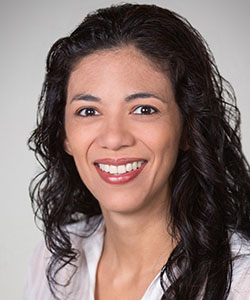Back Page: A Rural Reach for STEM Education
Psychological scientist Martha Escobar of Oakland University’s Cognitive and Behavioral Lab investigates the use of evidence-based approaches to promote scientific learning in low-income rural areas.
What is the aim or rationale behind your NSF-backed research project?
Our overall goal is to reach populations typically underrepresented in science, technology, engineering, and mathematics (STEM) to increase their interest and persistence in scientific careers. Our participants want to explore science, but lack the access and resources to attend available educational programs. NSF funds programs that promote equitable access to educational opportunities in science, and our programs are just a few examples of how formal and informal education can be combined to provide such opportunities. Our programs use evidence-based educational approaches to allow students to understand the relevance and utility of science, and connect science to their own life experiences. Our research explores the elements of our approaches that promote success, which helps develop models for future interventions.
What types of student activities are you testing or studying?
We have multiple programs that target multiple populations. A commonly used metaphor is that STEM education is a “leaky pipeline” where students are “lost” at all stages of the process. Although most elementary-age children are fascinated by science, they don’t pursue it as a career path. According to the ACT annual report, about half of high school graduates are interested in pursuing a STEM career, but only 20% meet the STEM benchmark, and this number is dismal for students that meet at-risk criteria: Only 2% of students who are racial/ethnic minorities, first-generation college students, and low-income meet the STEM benchmark. Overall, less than 8% of high school graduates actually go on to successfully obtain a STEM degree. Thus, we are implementing interventions at many crucial points in this “pipeline”: the transition from middle school to high school, the transition from high school to post-secondary education, the transition from 2-year to 4-year post-secondary education, post-secondary education itself, and the transition from baccalaureate to post-baccalaureate education.
We focus on investigating the impact of culturally-relevant, project-based learning to students’ interest, motivation, persistence, and self-efficacy in STEM learning. . For example, in some interventions, our students identify problems that affect their communities and work in teams to develop solutions for those problems. Considering that most of our students are from rural and low-income communities, we ask that their solutions are low-cost, portable, and built with materials that are readily available. The solutions may be an actual device, an app, or an innovative way to use existing resources. Our programs provide extensive peer, near-peer, and vertical mentoring, along with a community of individuals with similar backgrounds and interests. We’ve found that even students who have high academic self-efficacy doubt their potential in STEM or the extent to which STEM would be useful for their future. The project-based approach allows them to better understand how science is made and who who gets to do it. Many of our students will be first-generation high school graduates, and don’t believe they can become scientists. We provide them with the opportunity to experience science not as another marginalizing barrier, but as inclusive.
Why the focus specifically on rural school districts?
Students who are in “at risk” groups (e.g. being from a racial/ethnic minority group, low income) and those who live in rural areas lag behind in meeting STEM benchmarks. In some areas of our country, those two factors intersect and their effect is multiplicative. Our initial efforts have focused on the “Black Belt” of the state of Alabama, an area that extends from East to West in the state and which encompasses 17 counties and 19 school districts. The Black Belt is the area where the most fertile, organic material-rich “black,” soil was good for planting cotton. With cotton plantations came a large population of Black-African-descended people that worked the fields, and who make up a large percentage of the population still today. The area is not only marked by the high number of minority individuals that inhabit it, but also by high levels of poverty and low educational achievement (the Black Belt is often considered “the third world” of the United States). It also has some of the most devoted teachers and school officials, who are willing to invest time and resources to increase educational achievement in their schools.
What was your own experience with STEM education like?
My family moved overseas when I was little, and my K-12 education occurred in a place where math was considered the backbone of education, and access to computers and coding classes was provided even before computer education was widespread. My parents are engineers, and highly valued educational opportunities for their children. I had the incredible opportunity of becoming an undergraduate research assistant early in my college education, which allowed me to see first-hand how theoretical principles actually work, and how questions are answered through experimentation. That is the experience that I would like my students to have.






APS regularly opens certain online articles for discussion on our website. Effective February 2021, you must be a logged-in APS member to post comments. By posting a comment, you agree to our Community Guidelines and the display of your profile information, including your name and affiliation. Any opinions, findings, conclusions, or recommendations present in article comments are those of the writers and do not necessarily reflect the views of APS or the article’s author. For more information, please see our Community Guidelines.
Please login with your APS account to comment.